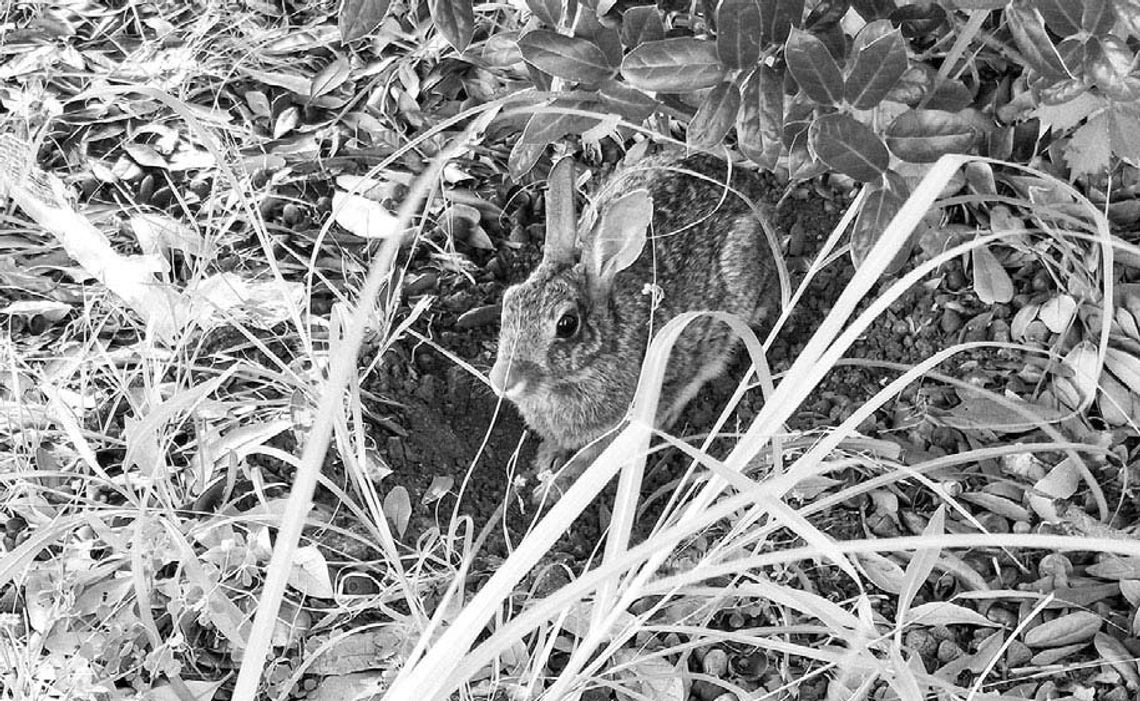AG
Abundant wildlife, from deer to ducks to the occasional fox sightings, is one of the joys of living in Central Texas. But as Taylor and surrounding cities expand into what was once natural habitat, local fauna has discovered that garden plants are tasty and cultivated yards are great hunting grounds.
“I know a lot of people don’t want their landscaping disturbed but I always like to go with the solution that causes the least harm,” said local gardening guru Julie Rydell. “We are disturbing other creatures’ habitats and kind of forcing them to go other places to find shelter and food. Their natural instinct is to seek safety.”
Rydell writes a column called Organic Gardening in Central Texas and also has a radio show with the same topic. She has spent 25 years gardening in the area and has seen the challenges brought about by expansion.
Experts say the first step to deterring or eliminating pests is determining what type of wildlife you are dealing with.
Measure holes and take pictures of paw prints or animal droppings, then do an internet search to help identify them. Rydell said while some animals make deeper holes for shelter, armadillos will make shallow holes as they hunt grubs and squirrels will make shallow holes to hide nuts.
Holes less than three inches across are most likely the work of insects, moles, rodents or snakes.
Holes that are six to 12 inches in diameter are likely to have been made by a fox, skunk or armadillo, especially if found near the base of trees or walls.
The problem is widespread enough that Texas A&M AgriLife Extension recently hosted a class in Georgetown on management techniques for nuisance wildlife affecting Williamson County residents. The culprits can be anything from feral hogs to armadillos to black vultures, with the victims ranging from plants to pets.
Gary Pastushok, a Williamson County extension agent who works with natural resources, says any approach to managing wildlife pests needs to be multipronged, with the main ingredient being patience. “If an animal’s hungry enough it doesn’t matter what you do, they’re going to try to take a bite of it,” Pastushok said.
When it comes to rascally rabbits, deer and other browsing varmints, Pastushok and Rydell mentioned a variety of solutions from erecting cages around gardens and putting sleeves on tree trunks to buying scentbased repellent powders or sprinkling cayenne pepper around plants.
Rydell also recommended spreading pet hair around gardens or purchasing coyote urine from a supply store to chase away bunnies and smaller pests.
One thing she does not recommend is the age-old advice of using naphthalene.
“Don’t put mothballs out. They are toxic. They dissolve outside and go right into the ground and the ground water. They are not healthy for pets and people,” she said.
In the case of armadillos, Rydell and Pastushok agree that it is important to first eradicate their favorite food, the white grubs commonly found in lawns.
“That’s their number one food and they can smell them for quite a distance and they’ll come and kill them all. Don’t make it easy for them,” Pastushok said. “Get rid of their food source and they’ll go elsewhere.
They’ll find a neighbor who doesn’t take the same precautions.”
One animal that can do extensive – and expensive – lawn damage is the feral pig. While residents of developed subdivisions may not ever see the animals, that doesn’t mean they aren’t around.
“Feral hogs are in your neighborhood, believe me,” Pastushok said.
“With all this rain they don’t necessarily have to go into neighborhoods.
But once the creek beds and vegetation starts drying up they’re looking for something to chew on and they’ll start migrating into suburbs and into yards.
They go out at night, rip up lawns and bedding plants and then go back to hiding during the day.”
But in Williamson County, there is hope for gardeners and lawn enthusiasts at their wit’s end with wildlife.
Williamson County has Cole May, a professional trapper.
“If someone has a question about wildlife damage, he’ll come out to the property and look at it and give a recommendation of what the homeowner can do, how to get rid of it or cage it up. Or he may eliminate the critter,” Pastushok said. “We ‘re lucky we have that free service countywide.”
Residents who would like to consult with Pastushok or May about their wildlife problems can call the county extension office at 512-9433300. There is no charge for their services, and Pastushok said they are there specifically to work with these types of issues. “We try to answer every call within 24 hours, at least to get hold of people and make sure they know they are being seen and we’re going to help them,” he said.





